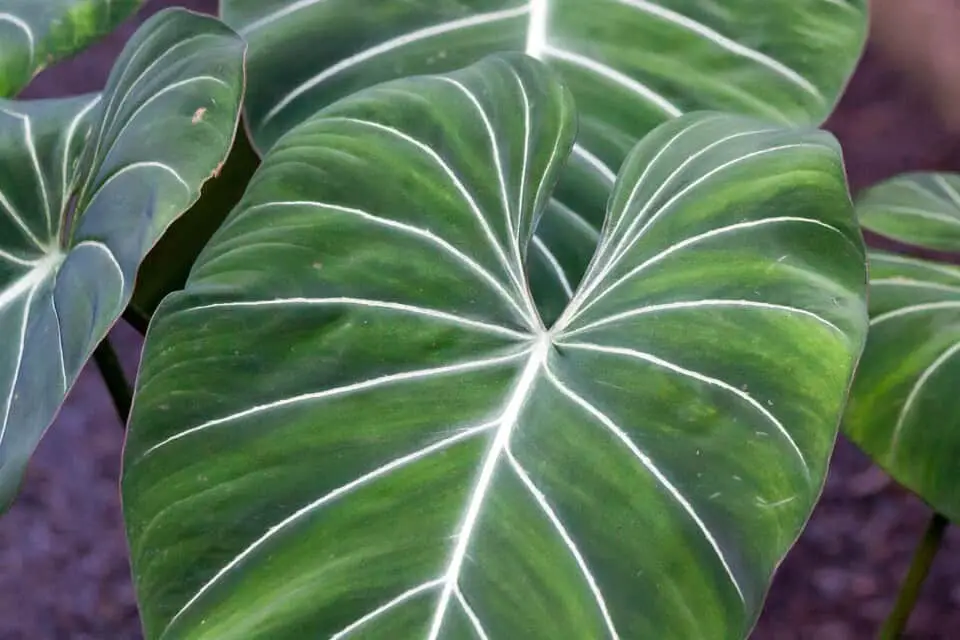Some links in the post are affiliate links and I get a commission from purchases made through some links found in the post.
I remember the first time I wanted to move my Philodendron outside – I was running out of space and needed a solution.
So, I toyed with the idea of placing it outdoors as I figured out what I could move around to create more room.
Of course, I was sad to see my plant go. But most importantly, I was agonizing over whether my plant could survive the outdoors.
After all, the drafts kept getting stronger, and I could not help but think that I was sending my plant to its death.
Not all philodendron species can grow in the outside some need to be grown indoors due to your climate.
Overall, anyone in USDA zones 9-11 can grow a Philodendron outdoors. They do best in bright and indirect light and enjoys a range between 70 and 80 degrees.
This guide takes you through where you can grow the Philodendron outside and how you should do so:
Can A Philodendron Be Put Outside?
While it should be pretty easy to answer this question, that is not the case. You see, optimal growing conditions come down to what we term as hardiness zones. And we will divide these into two:
The USA
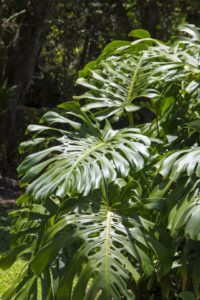 Any gardener in the US has come across hardiness zones. You can barely make it through choosing a plant before an expert asks you about your region’s hardiness zone.
Any gardener in the US has come across hardiness zones. You can barely make it through choosing a plant before an expert asks you about your region’s hardiness zone.
And at first, it used to bug me – I could not understand why it mattered. I later learned that growing plants outside your hardiness zone only sets you up for failure.
After all, these are zones that highlight the growing conditions in a region, signaling their suitability for certain kinds of plants.
And the Philodendron does best in hardiness zones 9 to 11. Examples of these include:
- Texas,
- Louisiana,
- Florida, and
- California
If you are unsure of your hardiness zone, you can always look up USDA hardiness zones and find your home area.
The UK
The United Kingdom uses a system similar to the USDA hardiness zones. But it refers to it as the Royal Horticultural Society (RHS) zones. Like the USDA zones, the RHS zones classify climatic zones, enabling you to gauge where you fall.
Their scale runs from H7 to H1A. And the equivalent of USDA zones 9a to 11b would be H4 to H1C. Examples include:
- Holyhead,
- Cambridge,
- Swansea
What if you do not live in these climatic zones? In that case, you should grow the Philodendron indoors where you can offer it the growing conditions it needs.
And in the summer, you can move them outdoors as long as the temperatures do not fall below 55 degrees Fahrenheit (13 degrees Celsius. Keep reading for more on how you can help your Philodendron thrive in the outdoors.
You may also like: What are the benefits of having a philodendron
Which Philodendrons Can Thrive Outdoors?
Philodendron refers to the genus Philodendron, which bundles hundreds of species. And it’s important to note that these species have different care requirements.
Generally, any Philodendron can grow outside if you live in USDA zones 9 to 11. After all, these plants are native to the tropics, and the climatic conditions in these regions are similar to their native habitats.
But if you grow them outside these regions, you can expect to face a myriad of issues, and the plants could even die.
So, almost any Philodendron can grow outside in the right conditions. Examples include:
- Philodendron Brasil,
- Philodendron Monstera,
- Philodendron Xanadu,
- Split Leaf Philodendron, and
- Heart Leaf Philodendron.
These do well in partial shade/ partial sunlight. And you can use them in landscaping. However, we must reiterate that each species has a set of unique growing requirements.
Thus, before planting any species, even within the recommended zones, you should check that your outdoors meets the requirements.
How to Grow a Philodendron Outside
You can grow your Philodendron outside all year if you live in USDA zones 9 to 11.
If you don’t, you can only grow it outside in the summer when the temperatures are favorable, i.e., below 55 degrees Fahrenheit. You should ensure that the plant gets the following care requirements:
Light
Generally, the Philodendron does best when exposed to bright and indirect light. But that does not mean that it cannot thrive under different lighting conditions.
However, if you place the plant in low light conditions, its growth slows down, and the plant may experience leggy growth.
And in direct sun exposure, the plant’s leaves burn and can exhibit yellowing. Striking a balance between these extremes is tricky outdoors, but not impossible. And here are the factors you must consider:
Protection from Direct Sunlight
The Philodendron does not do well in bright direct sun. If anything, its leaves burn. An important tip to remember is that this plant grows in the tropics under canopies.
And in such conditions, it receives filtered light. That means that even in the outdoors, you cannot leave it in the full glare of the sun. Instead, you must ensure it gets shade for the most part.
We have an article on can philodendrons grow in shade to give you some more information.
The Direction of the Sun
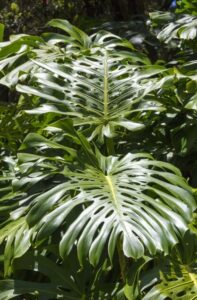 Have you considered where the sun rises and sets? In the afternoon, the sun tends to be unforgiving, and its rays can cause untold havoc on your Philodendron.
Have you considered where the sun rises and sets? In the afternoon, the sun tends to be unforgiving, and its rays can cause untold havoc on your Philodendron.
So, you must assess the parts of the garden that receive morning or evening sun as this is gentle. And position the Philodendron here.
Note that as the earth rotates, the sun’s position will change. You must be ready to move the plant around to account for this.
And if the plant is in a pot, this should be easy. If not, you will need to plant some vegetation to provide cover or plant the Philodendron near trees and tall vegetation.
On the bright side, the Philodendron adapts easily to different conditions. And as long as the light is not too low or direct, the plant will find a way to keep growing.
If your plant does not get sufficient light, it will exhibit leggy growth – where its stems grow long and thin, yet the leaves don’t grow much.
The leaves also appear to be getting smaller, with fewer new leaves on the plant. Plants do this when they do not have enough energy to produce strong growth with healthy foliage due to a lack of photosynthesis.
And we all know that the latter process depends on access to light. Another problem likely to ensue from low light is leaning towards the light.
In the outdoors, this presents as moving away from the nearby vegetation or scaling it to reach for the light.
And, of course, the plant will also have slowed growth. In these cases, all you need to do is reposition the plant to ensure it gets enough bright and indirect light. If the plant is permanently in the garden, you can reduce the shade around it.
What happens when the Philodendron gets too much light exposure? Moving your plant from low to direct light is akin to jumping from the frying pan into the fire.
While low light causes leggy and stunted growth, direct sun burns the plant. And there is nothing you can do to reverse the sunburn.
All you can do is move the plant to a shaded area with access to partial sunlight. Then get rid of the damaged leaves and allow the plant to recover.
You may have noticed that we emphasized light in this guide. But in most cases, that’s the most common struggle with moving a Philodendron outdoors.
You may also like: What is the rarest philodendron?
Water
When growing a Philodendron indoors, setting up a regular watering schedule is easy. After all, the conditions seldom change save for in the winter when the plant becomes dormant.
But in the outdoors, watering comes in two forms: you and nature. So, you will need to build your schedule around the rain.
For some people, the watering needs to increase when they move their Philodendrons outside – especially for people in hot and dry areas.
But for those in humid regions, the needs may decrease because the rain and high humidity replenish the soil. You must be careful about:
Overwatering the plant
Given that the rain will lend you a helping hand, you might not need to water the plant often. Doing so can waterlog the soil and cause root rot.
It can also encourage the growth of fungi. If you notice leaf yellowing, that’s a sign of distress.
Underwatering the plant
The rain and humidity might not be enough to keep the soil moist. And in hot and dry areas, you can barely rely on these factors.
If anything, the evaporation rate will be high, and you will need to water the plant more. Consider mulching the soil to reduce the water loss rate.
The plant will let you know if it’s unhappy by drooping, exhibiting stunted growth, browning of the leaves, cracking and dry soil, etc.
If you have trouble keeping up with the changing watering needs, invest in a moisture meter. It will help you know exactly when your plant needs water to avoid making any costly errors.
Temperature
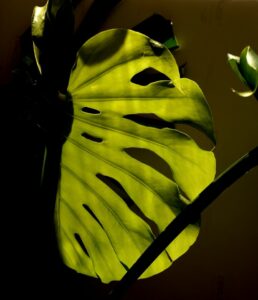 Philodendrons growing indoors are fairly easy to manage. After all, you can adjust the thermostat, and just like that, you’ve given the plant an ideal growing environment.
Philodendrons growing indoors are fairly easy to manage. After all, you can adjust the thermostat, and just like that, you’ve given the plant an ideal growing environment.
But since you can’t do that indoors, how can you keep your plant alive? It starts by noting the ideal temperature range for the Philodendron, which is anything above 55 degrees Fahrenheit.
Of course, there is an upper limit to this – anything above 90 degrees Fahrenheit. Ideally, the plant should enjoy a range between 70 and 80 degrees.
While the plant does not enjoy extremely high temperatures, it tolerates them better than extremely cold temperatures.
When the temperatures continuously dip below 55 degrees Fahrenheit, the plant shows signs of distress.
We recommend moving the plant indoors before winter begins if you live in an area where the temperatures fall below 55 degrees Fahrenheit. But if the dips are temporary, the plant can withstand the changes.
Must you observe all these care requirements? Yes – moving your plant outside exposes it to a range of pests from surrounding vegetation.
And to give it a fighting chance against these pests, you must ensure it grows strong and healthy – by providing it with water and adequate light. Don’t forget to feed it during the spring, summer, and fall with a balanced fertilizer.
You may also like: How to propagate philodendrons in water
How To Move Your Philodendron Outdoors
The excitement of knowing that your Philodendron can grow outside can have you moving it outdoors immediately. But that can harm the plant by sending it into shock.
Philodendrons tend to be sensitive to changes in their environments, and such a significant move should be gradual. How should you do this?
Patience
You cannot move your plant outdoors until two or three weeks after the last frost passes.
This species can die from frost exposure, and it’s best to take precautions rather than suffer losses. Wait for when the weather is favorable before making any changes.
Gradual Exposure
If your plant is currently indoors, it likely gets partial sunlight each day and has gotten accustomed to the room temperature and conditions.
So, what’s in the outdoors may feel a bit too extreme. To ease it into the outdoors, leave the plant outside for a few hours the first day.
Maybe two hours of exposure to the outdoors. Then keep doing this for a few days. If the plant seems fine, increase the exposure by an hour and do this for a few days.
Then add another hour and keep doing it. Eventually, move the plant to receive morning and evening sun for a few hours each day.
The plant should be fine under this exposure. But if you were to move it to direct sun immediately from the indoors, it would burn. That’s why we recommend taking it slowly.
Adjustments
After your plant has been in the evening and morning sun for a few hours each day, you can now try the night conditions. Leave the plant outside all day and night.
That allows you to check if it can withstand the cold temperatures at night. In zones 9 to 11, the plant should hold up quite well as the temperatures are not extreme.
But outside these zones, the plant could suffer damage. You will thus need to check its state the next day. If the plant is okay, you can leave it outside for good.
But if it seems not to be doing well, you will need to assess its placement. Perhaps you might have rushed the adjustments, or your zone’s conditions are too harsh for the plant.
Either way, you cannot leave it outside all day and night. Consider easing up on the exposure and allowing the plant to heal before you try leaving it outside again.
If it still suffers damage, you will need to grow it indoors permanently or try warmer months where the conditions may be more favorable.
Placement
Even when growing outside, the Philodendron will still not want direct exposure to direct sun as it can burn its leaves. So, you must find a spot with partial shade/ partial sunlight.
Ideally, this would be next to a tree or tall vegetation. You can also use it as part of a landscape where it can rely on other plants for shade.
Aftercare
The Philodendron will still need all the care requirements discussed earlier. You need to ensure you feed it regularly and check for pests.
You will not have much control over its temperature and humidity access. But you can keep an eye out for any adverse changes that signal inadequate or extreme exposure.
Most importantly, you will need to adjust the plant’s watering schedule. Now that the plant is outdoors, where drafts and sun exposure can dry the soil, you may need to water it more.
But you must also keep in mind that the plant will now have access to rainwater. So, you cannot stick to a regular watering schedule as forces of nature will also come into play.
Moving the plant outdoors does not mean your maintenance work will automatically reduce. You will still need to keep checking the plant for signs of damage.
When Should You Move Your Philodendron Indoors?
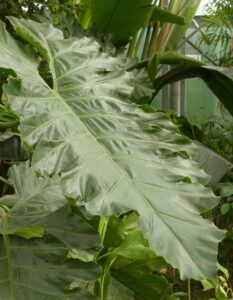 If you live outside USDA zones 9 – 11, where the temperatures sometimes fall below 55 degrees Fahrenheit, you will need to move your Philodendron indoors in the winter.
If you live outside USDA zones 9 – 11, where the temperatures sometimes fall below 55 degrees Fahrenheit, you will need to move your Philodendron indoors in the winter.
Rather than wait until the frost appears, you should ease the plant into its new environment. Ideally, you should start moving it in the fall by moving it indoors for a few hours each day.
It’s like a reverse of what we suggested when moving your Philodendron outdoors in the guide above. Do this for a few days and increase the exposure time every few days.
In a few weeks, the plant should be ready to move indoors for the winter, where you can control its growing conditions. And when it’s time to move it back out, you can follow the guide above.
Final Thoughts
Growing your Philodendron is a relatively easy task. All you need is to adjust your care routine to accommodate the outdoors factors, and your plant will be good. Happy Gardening!
Related articles:
How to Care for a Philodendron Tiger Tooth
Why is my Philodendron Brasil Dying

